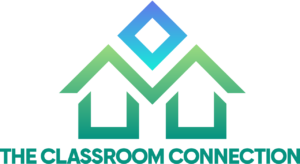
In today’s rapidly evolving world, education is undergoing a profound transformation, thanks to the integration of technology into the classroom. This paradigm shift is reshaping traditional educational models, offering new possibilities for engagement, personalization, and global connectivity. In this blog post, we will delve into the various ways technology is revolutionizing education and explore the advantages, challenges, and future prospects of this exciting journey.
1. The Role of Technology in Education: A Paradigm Shift
The conventional education system, characterized by one-size-fits-all approaches and rigid classroom settings, is gradually giving way to a more dynamic and learner-centered model. Technology is at the forefront of this transformation, enabling educators to tailor learning experiences to individual students’ needs and fostering a more interactive and engaging environment.
2. Advantages of Technology Integration in the Classroom:
- Enhanced Engagement and Interactivity: Interactive tools, simulations, and gamification techniques capture students’ attention and make learning enjoyable. This heightened engagement leads to improved information retention and critical thinking skills.
- Personalized Learning: Adaptive learning platforms use data to cater to each student’s learning pace and style, promoting a deeper understanding of subjects and addressing gaps in knowledge.
- Access to Global Information: The internet provides students with instant access to a wealth of information, allowing them to explore subjects beyond the confines of textbooks. Virtual field trips and online resources bring the world into the classroom.
- Collaborative Learning: Collaborative platforms and video conferencing tools foster teamwork and communication skills essential for the modern workplace. Students can collaborate with peers across geographical boundaries, enriching their perspectives.
3. Overcoming Challenges and Concerns:
- Digital Divide: Despite the benefits, unequal access to technology remains a challenge. To bridge the digital divide, schools must implement initiatives that ensure all students have the necessary tools and connectivity.
- Screen Time and Distraction: The concern over excessive screen time and potential distractions is valid. Educators should balance technology use with offline activities and employ tools that minimize distractions.
- Data Privacy and Security: As technology gathers more student data, safeguarding privacy becomes paramount. Schools should adhere to strict data protection measures to ensure student information remains secure.
4. Successful Case Studies:
- The AltSchool: This innovative school uses technology to create personalized learning plans for each student, fostering independent thinking and problem-solving skills.
- Khan Academy: A pioneer in online education, Khan Academy offers free video lessons and exercises that empower students to learn at their own pace and mastery level.
5. Future Trends in EdTech: What Lies Ahead:
- AI-Powered Learning: Artificial intelligence will enable even more personalized and adaptive learning experiences, catering to individual strengths and weaknesses.
- Virtual Reality and Augmented Reality: VR and AR will transport students to immersive learning environments, making abstract concepts tangible and enhancing experiential learning.
- Blockchain for Credentialing: Blockchain technology could revolutionize credential verification, ensuring the authenticity of diplomas and certificates.
6. Tips for Educators and Schools: Maximizing EdTech Impact:
- Provide comprehensive training for educators to ensure they are proficient in using technology tools effectively.
- Foster a culture of experimentation and continuous learning, encouraging educators to explore new ways of integrating technology into their teaching methods.
7. The Human Touch: Balancing Technology with Traditional Teaching:
While technology offers numerous benefits, the importance of human interaction and mentorship cannot be understated. Educators should strike a balance between leveraging technology and maintaining meaningful connections with students.
Takeaway
In the journey of transforming education through technology, we are witnessing a revolution that has the potential to make learning more engaging, personalized, and globally connected. As we navigate the challenges and embrace the opportunities, it’s imperative to remember that technology is a tool that can amplify the impact of effective teaching and human guidance.





